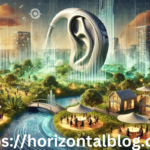Introduction
Toothaches can be incredibly painful and disruptive, often requiring immediate relief. While modern dentistry provides treatments, natural remedies like reflexology for toothache offer a non-invasive and effective way to manage pain. Reflexology is an ancient practice that stimulates specific pressure points in the body to relieve discomfort. But does it really work for toothaches?
In this in-depth guide, we’ll explore how reflexology can help with dental pain, the best pressure points to target, step-by-step techniques, and expert tips to maximize its effectiveness.
What is Reflexology?
Reflexology is a therapeutic practice that applies pressure to specific areas on the feet, hands, and ears to stimulate healing in corresponding parts of the body. This holistic approach is based on the belief that these areas are connected to organs and body systems through energy pathways.
When it comes to toothache relief, reflexology focuses on stimulating points that correspond to the teeth, jaw, and nerves to reduce pain and inflammation naturally.
How Reflexology Helps with Toothache
Reflexology for toothache works by:
- Stimulating Nerve Endings – Applying pressure to specific reflex points helps block pain signals from reaching the brain.
- Improving Blood Circulation – Enhanced circulation around the affected area reduces inflammation and promotes faster healing.
- Releasing Endorphins – Reflexology stimulates the release of endorphins, the body’s natural painkillers, offering immediate relief.
- Reducing Stress and Tension – Many toothaches are aggravated by stress and jaw tension. Reflexology helps relax muscles and nerves, alleviating discomfort.
Now, let’s explore the best pressure points for relieving tooth pain using reflexology.
Best Reflexology Pressure Points for Toothache Relief
Here are the most effective reflexology points to ease tooth pain naturally:
1. Hand Reflexology for Toothache
🖐️ Point: LI4 (Hegu) – Between Thumb and Index Finger
- Location: Found in the webbing between your thumb and index finger.
- Benefits: This point is known for its powerful pain-relieving properties and is widely used in acupressure and reflexology.
- How to Use:
- Press the point firmly with your opposite thumb.
- Hold for 30-60 seconds while taking deep breaths.
- Repeat on both hands.
✅ Effectiveness: Helps relieve toothache, headaches, and jaw pain quickly.
2. Foot Reflexology for Toothache
👣 Point: Teeth Reflex Point – Big Toe and Second Toe Joint
- Location: The base of the big toe corresponds to the teeth and jaw area in reflexology.
- Benefits: Stimulating this point helps reduce dental pain, gum inflammation, and jaw tension.
- How to Use:
- Apply firm pressure using your thumb.
- Massage in circular motions for 1-2 minutes.
- Repeat on both feet.
✅ Effectiveness: Promotes pain relief and relaxation.
3. Ear Reflexology for Toothache
👂 Point: Shen Men (Heavenly Gate) – Upper Ear
- Location: In the upper inner fold of the ear.
- Benefits: Known to calm nerves and reduce pain, this point is effective for toothache relief.
- How to Use:
- Pinch the area gently but firmly.
- Massage for 30 seconds using your index finger and thumb.
- Repeat several times a day.
Effectiveness: Reduces pain sensitivity and stress-related jaw tension.
Step-by-Step Reflexology Technique for Toothache
Follow this simple reflexology method for quick and effective relief from tooth pain:
Step 1: Relax and Prepare
Find a quiet place to sit comfortably. Take a few deep breaths to relax your body before starting.
Step 2: Apply Pressure to Key Points
- Use your thumb or index finger to apply firm but comfortable pressure on the recommended points (hand, foot, or ear).
- Hold each point for 30-60 seconds while breathing deeply.
Step 3: Massage in Circular Motions
After applying pressure, gently massage the area in slow, circular motions for another minute.
Step 4: Repeat on Both Sides
For best results, repeat the process on both hands, feet, or ears to balance energy flow.
Step 5: Hydrate and Rest
Drink a glass of water to flush out toxins and allow your body to heal.
Additional Tips for Maximizing Reflexology Benefits
- Use Essential Oils – Peppermint or clove oil can enhance pain relief when applied during reflexology.
- Stay Consistent – Regular practice improves effectiveness and promotes long-term pain management.
- Pair with Other Remedies – Reflexology works well with warm salt water rinses, cold compresses, and herbal teas for holistic healing.
- Seek Professional Help if Needed – If pain persists, consult a dentist for underlying dental issues.
Conclusion
Reflexology for toothache is a natural, safe, and effective way to manage dental pain. By stimulating key pressure points on the hands, feet, and ears, you can reduce pain, improve circulation, and promote relaxation. While reflexology cannot replace professional dental care, it serves as an excellent complementary therapy for immediate relief.
If you’re experiencing severe or persistent tooth pain, consult a dentist for proper diagnosis and treatment. In the meantime, try these simple reflexology techniques to ease discomfort naturally!
👉 Have you tried reflexology for toothache? Share your experience in the comments below!
Frequently Asked Questions (FAQs)
1. How long does it take for reflexology to relieve a toothache?
Most people experience relief within 5-10 minutes of applying reflexology. However, results may vary based on pain severity and consistency.
2. Can reflexology replace dental treatments?
No, reflexology is a complementary therapy and should not replace professional dental care. It can help manage pain but does not treat infections or cavities.
3. Is reflexology safe for children with toothaches?
Yes, but use gentle pressure and consult a healthcare professional before trying reflexology on young children.
4. How often should I use reflexology for toothache?
You can use reflexology 2-3 times a day for acute pain. Regular practice can help prevent future discomfort.
5. Are there any side effects of reflexology?
Reflexology is generally safe but may cause temporary dizziness or mild soreness in some individuals. Drink water and rest afterward to prevent discomfort.



